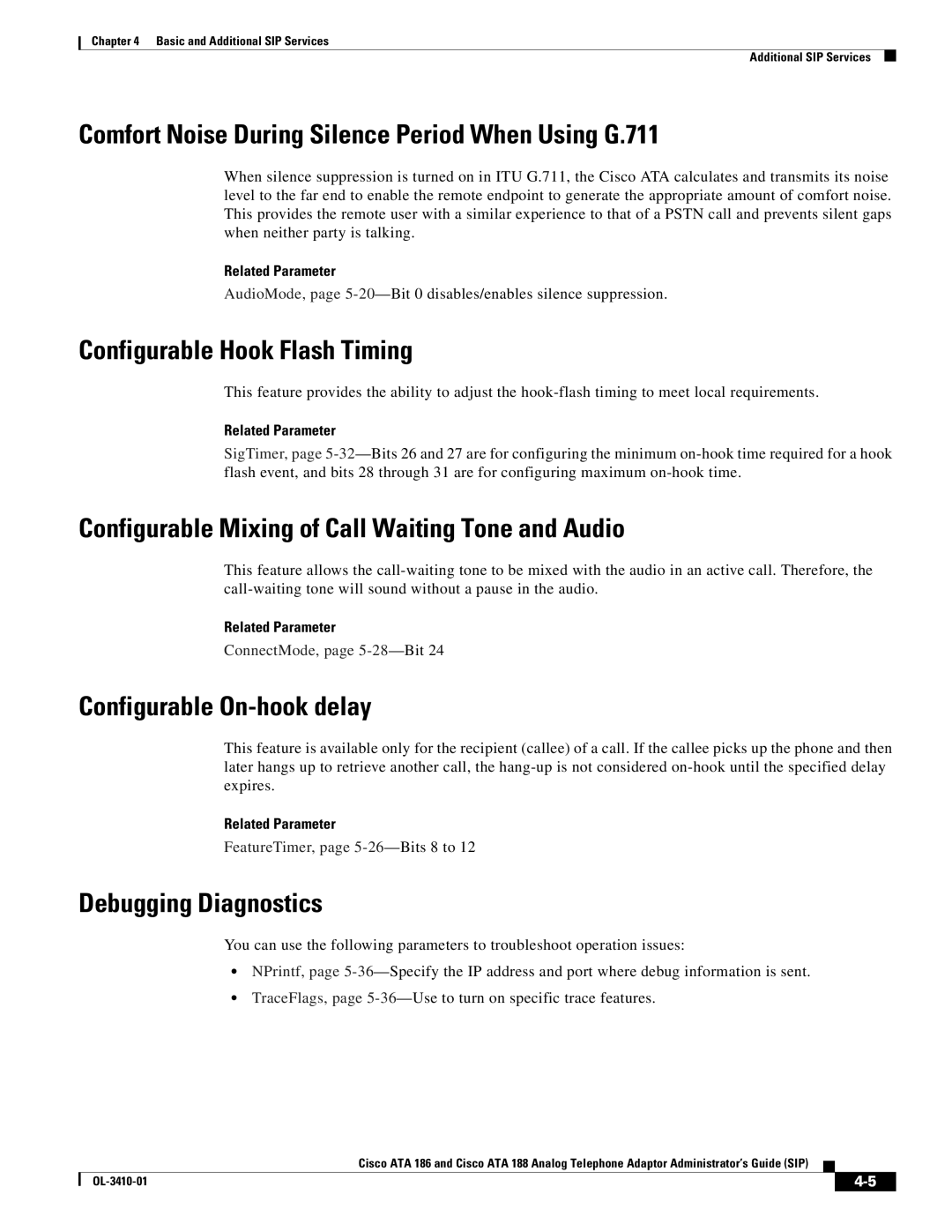
Chapter 4 Basic and Additional SIP Services
Additional SIP Services
Comfort Noise During Silence Period When Using G.711
When silence suppression is turned on in ITU G.711, the Cisco ATA calculates and transmits its noise level to the far end to enable the remote endpoint to generate the appropriate amount of comfort noise. This provides the remote user with a similar experience to that of a PSTN call and prevents silent gaps when neither party is talking.
Related Parameter
AudioMode, page
Configurable Hook Flash Timing
This feature provides the ability to adjust the
Related Parameter
SigTimer, page
Configurable Mixing of Call Waiting Tone and Audio
This feature allows the
Related Parameter
ConnectMode, page
Configurable On-hook delay
This feature is available only for the recipient (callee) of a call. If the callee picks up the phone and then later hangs up to retrieve another call, the
Related Parameter
FeatureTimer, page
Debugging Diagnostics
You can use the following parameters to troubleshoot operation issues:
•NPrintf, page
•TraceFlags, page
Cisco ATA 186 and Cisco ATA 188 Analog Telephone Adaptor Administrator’s Guide (SIP)
|
| ||
|
|
